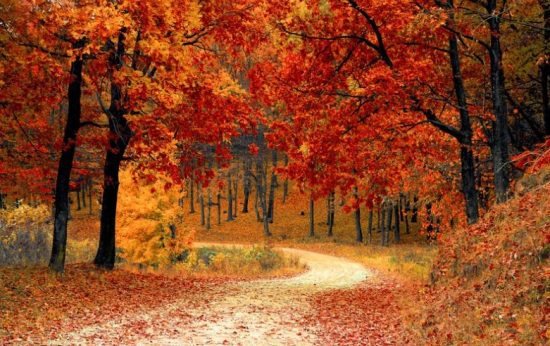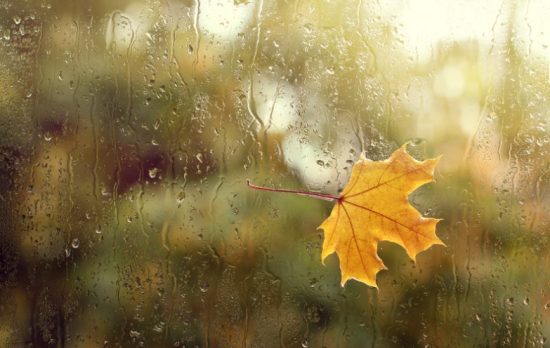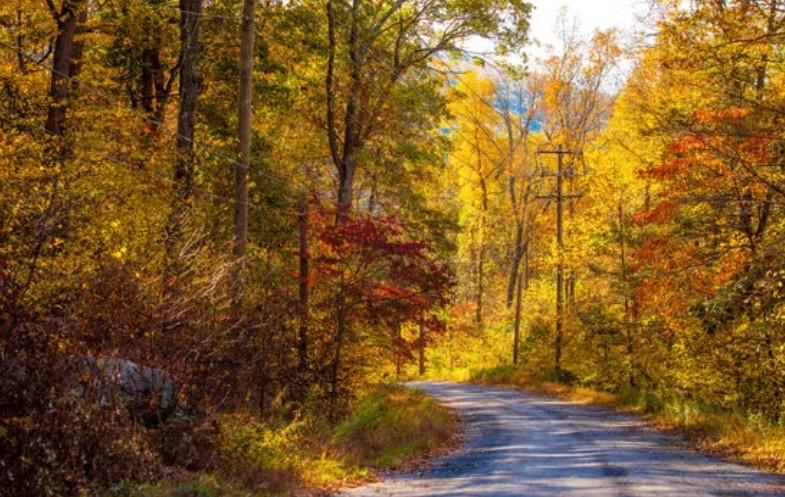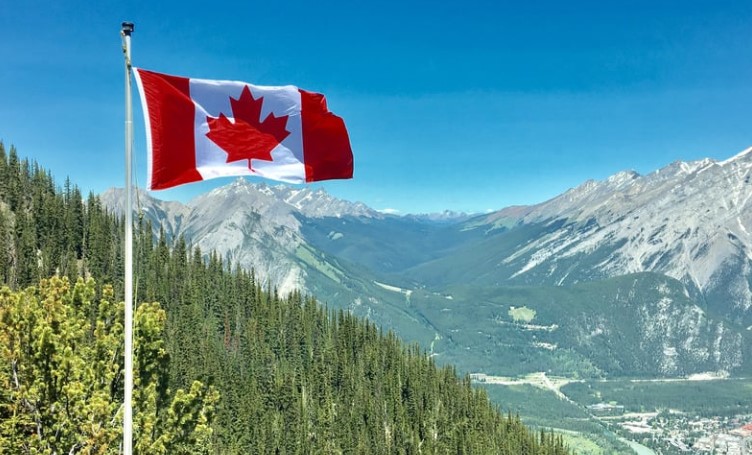As the summer heat begins to wane, Canadians all across the country start asking the same question: when does fall officially begin? With its crisp air, stunning foliage and pumpkin-spice everything, autumn is a season that many Canadians look forward to. But when exactly can we expect it to arrive? In this blog post, we’ll explore all things fall – from understanding the autumnal equinox to enjoying seasonal activities and staying safe during unpredictable weather. So grab your favourite sweater and let’s dive into when fall starts in Canada!
Understanding the Autumnal Equinox

The autumnal equinox marks the official start of fall in Canada, and it occurs every year around September 22 or 23. But what exactly is an equinox? Simply put, it’s a point at which the sun shines directly on the Earth’s equator, causing day and night to be roughly equal in duration.
During the autumnal equinox, Canadians can expect to experience a shift from longer days during summer to shorter days as we head into winter. This change is due to the tilt of Earth’s axis relative to its orbit around the sun. As we move further away from the summer solstice (the longest day of the year), daylight hours begin to decrease.
Interestingly enough, during this time there are certain places where you can balance an egg upright on its end! Though this isn’t exclusive for this time of year nor scientifically proven, it still makes for a fun experiment!
Understanding what causes seasons like fall can help us appreciate nature more fully. So next time you’re enjoying that pumpkin spice latte or walking through crunchy leaves on your morning commute – take a moment to thank our planet’s unique position in space!
When Does Fall Start in Canada?
Fall, also known as autumn, is one of the four seasons that Canada experiences every year. It marks the transition period from summer to winter and is characterized by falling temperatures, changing colours in foliage, and shorter days. The start of fall is determined by an astronomical event known as the autumnal equinox.
The autumnal equinox usually occurs on September 22 or 23 in Canada each year when the sun crosses directly over Earth’s equator. During this time, both hemispheres receive equal amounts of daylight and darkness. After this event, days gradually become shorter while nights get longer until the winter solstice.
Understanding the science behind fall can help us appreciate it even more. Knowing when it starts can assist us in planning activities like apple picking or enjoying a pumpkin spice latte with friends!
How Long Does Fall Usually Last?
Fall, also known as autumn, is the season that marks the transition from summer to winter. It’s a beautiful season when leaves change colours and fall off trees, and temperatures get colder. But how long does it usually last in Canada?
In general, fall lasts for about three months in Canada. The official start of fall in Canada is determined by the Autumnal Equinox which typically falls on September 22 or 23 each year. After that day, days will become shorter while nights grow longer.
The exact duration of Fall depends on where you are located within Canada since different regions experience varying degrees of temperature and weather patterns during this time of year.
In some parts of Northern Canada like Nunavut or Yukon Territory where snowfall can occur earlier than other areas; Fall may only last for several weeks before giving way to Winter. Conversely, Southern Ontario might have a more extended period of Fall due to milder weather conditions.
Canadians can expect their fall season to span over roughly 90 days – ample time to enjoy all the beauty and activities it has to offer!
How Does the Weather Change in Fall?

As summer winds down and we approach the autumnal equinox, temperatures begin to cool down across Canada. The days become shorter, and the air becomes crisper as the fall weather starts to roll in.
- One of the most noticeable changes during this season is the fluctuation in temperature. Days can still be warm, but nights can be quite chilly. It’s not uncommon for areas further up north to experience a frost or even snow before October arrives.
- Another change that comes with fall weather is increased rainfall. As we move into October and November, precipitation levels tend to rise significantly compared to earlier in the year. This increase in the rain brings about beautiful foliage changes as leaves turn red, orange, and yellow before falling from trees.
- Winds also pick up during this time of year as cold fronts start moving down from northern regions toward warmer climates below them. These gusts bring cooler air with them that helps maintain lower temperatures throughout the day.
It’s important to prepare for these shifts by adding layers of clothing when going outside and making sure your home is ready for lower temperatures through insulation and heating systems maintenance!
Fall Activities to Enjoy in Canada
Fall in Canada is a magical time of year, with cooler temperatures and stunning foliage creating the perfect backdrop for outdoor activities. With so many ways to enjoy the season, it can be tough to decide what to do first!
- One classic fall activity that Canadians love is going apple picking. This fun family-friendly pastime allows you to get outside and enjoy the crisp autumn air while also stocking up on delicious fresh fruit.
- Another great way to take advantage of the season is by hiking or biking along one of Canada’s many scenic trails. From rugged mountain routes to peaceful lakeside paths, there are options available for every skill level.
- Of course, no discussion of fall activities in Canada would be complete without mentioning Thanksgiving! Whether you’re hosting a big family dinner or participating in a community event, this holiday offers plenty of opportunities for delicious food and quality time spent with loved ones.
- For those who prefer indoor activities, why not try your hand at baking some seasonal treats? Pumpkin pie and apple cider donuts are just two examples of the delicious treats that come into their own during this time of year.
- Whatever your interests may be, there’s something special about fall in Canada that makes it an ideal season for exploring new hobbies and spending time with friends and family alike.
How Fall Weather Varies Across Canada?
Fall weather varies greatly across Canada due to the country’s vast size and different geographical regions.
- In Western Canada, particularly in British Columbia, fall tends to be mild with temperatures ranging from 10-15°C. However, this region experiences a lot of rain during this season but also some beautiful sunny days.
- Central Canada, including Ontario and Quebec, experiences cooler temperatures that can drop below freezing at night. This area is known for its stunning autumn foliage as trees turn vibrant shades of red, orange and yellow.
- The Prairie provinces – Saskatchewan, Manitoba and Alberta – experience brisk temperatures with frosty mornings becoming more common as the season progresses. As winter approaches snow can start falling in these areas towards late September or early October.
- Meanwhile on the East Coast of Canada including Newfoundland & Labrador and Nova Scotia; fall brings strong winds off the ocean causing storms along with chilly air which makes it feel colder than it is.
- Finally up North in Yukon Territory where winter comes earlier than other parts of Canada so therefore Fall is very brief – only lasting about a month or less!
If you are planning to travel around Canada during Fall make sure you pack clothes suitable for all types of weather as conditions can vary greatly depending on which region you’re visiting!
Tips on Staying Safe During the Fall Weather

As the weather starts to change in the fall, it’s important to be prepared for potential safety hazards that come with it.
Here are some tips on staying safe during the fall weather:
- Dress Appropriately: As temperatures drop, make sure you’re dressing in layers and wearing appropriate clothing such as jackets, hats, and gloves.
- Be Aware of Slippery Surfaces: Wet leaves can be slippery and dangerous when walking or driving on them. Be cautious when navigating through areas with fallen leaves.
- Check Your Home Heating Systems: Before turning on your heating system at home, have a professional inspect it to ensure there are no leaks or malfunctions that could cause harm.
- Watch Out for Wildlife: Fall is mating season for many animals which means they may be more active and aggressive than usual. Keep a safe distance from wildlife if encountered.
- Practice Fire Safety: With cozy fires becoming more popular during fall months, it’s important to make sure your fireplace is properly cleaned and maintained before using it.
By following these simple tips, you can stay safe while enjoying all that fall has to offer!
Conclusion
Fall is a beautiful season in Canada that brings about many changes. From the leaves changing colours to cooler temperatures and shorter days, there are plenty of things to enjoy during this time of year.
Whether you prefer outdoor activities like hiking or indoor activities like pumpkin carving, there’s something for everyone. It’s important to stay safe during the fall weather as well, by being aware of potential hazards such as wet leaves on sidewalks or slippery roads.
Fall is a wonderful time to be in Canada and experience all that this season has to offer, so get out there and enjoy it while it lasts!
FAQs on when does fall start in Canada
1. Is September 21 the first day of fall?
This year’s first day of autumn in the Northern Hemisphere is Thursday, September 22.
2. Is August the first month of fall?
The meteorological calendar states that the start of autumn is always on September 1 and the end is always on November 30.
3. What is the coldest month in Canada?
Daytime highs in the summer can reach 35 °C and beyond, while some regions of the nation regularly experience winter lows of -25 °C, and January is the coldest month in Canada.
4. Where is the nicest weather in Canada?
On lists of Canada’s mildest cities, the southern British Columbia cities of Victoria, Vancouver, and Abbotsford compete for first place. The three cities are ahead of the pack due to their regular mild evenings and extensive growing seasons without frost.










